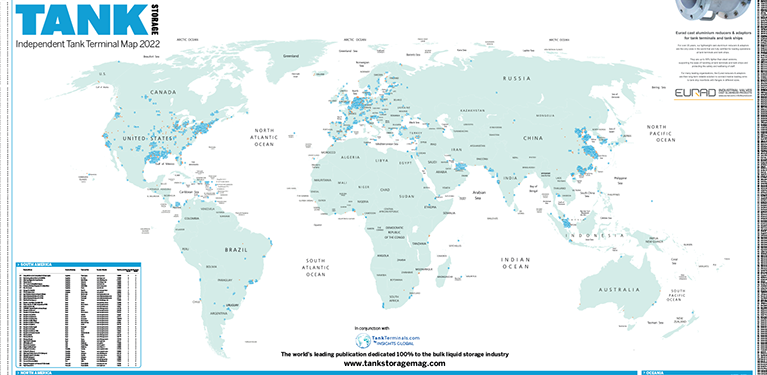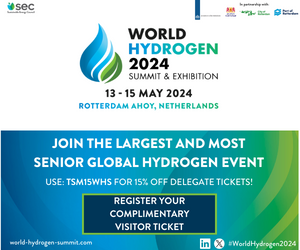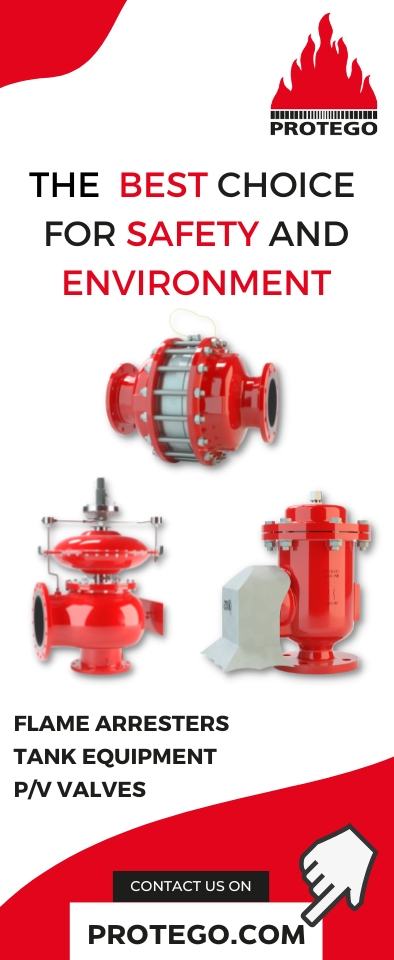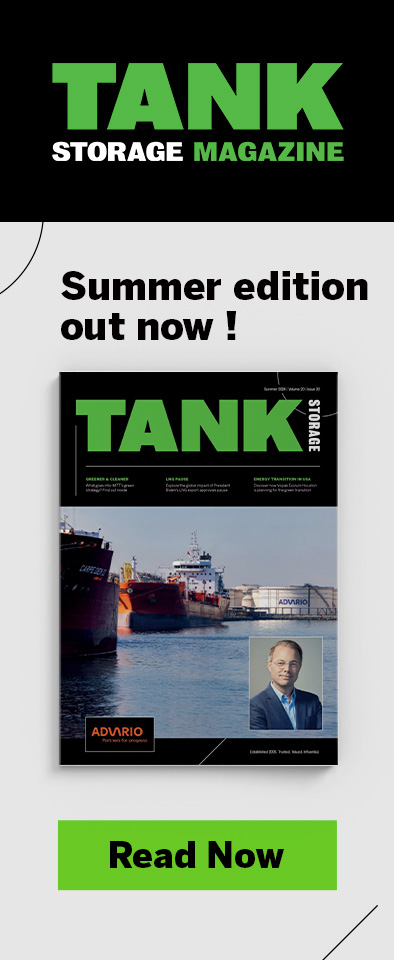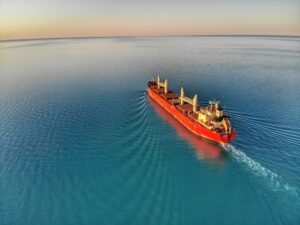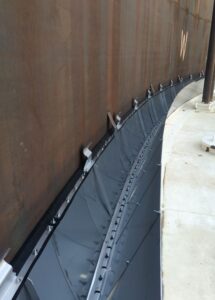Let’s take a look back at the only event delivering the cutting edge of tank storage and energy infrastructure: StocExpo
On 12 & 13 March, StocExpo returned for its 19th edition, welcoming the tank storage and bulk liquid community, familiar and new, to the hub of the energy infrastructure market in Rotterdam, the Netherlands. Championing collaboration and innovation, the event remains the blueprint for safer and sustainable fuel storage.
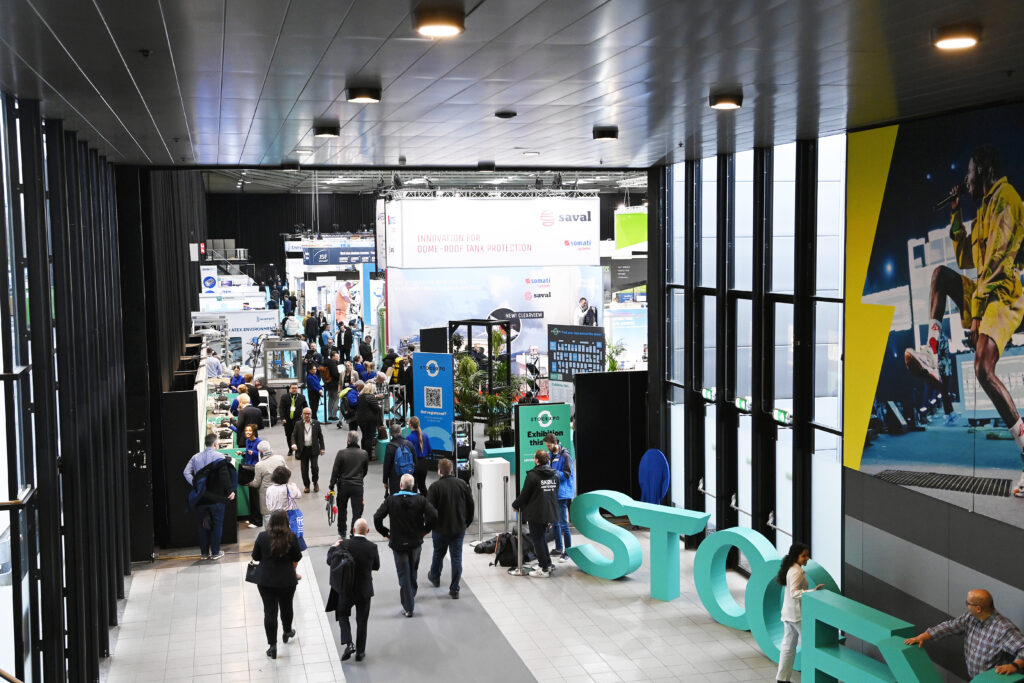
With over 3,500 attendees and more than 150 exhibitors, StocExpo solidified its position as the leading influencer in the tank storage and energy infrastructure industry. Over the two days, the event welcomed leading terminals, ports, regulators, financiers, renewable fuel suppliers and oil and gas and petrochemical producers, ensuring a holistic and inclusive representation of the industry, fostering innovation, knowledge-sharing, collaboration, and open discussions regarding the current challenges and outlook of the future.
Strategic Storage
Once again, FETSA and Tank Storage Magazine jointly hosted StocExpo’s 2024 conference on tank storage and future fuels. The aim: to bring together global participants, including terminal operators, ports, traders, policymakers, and industry leaders in chemicals, oil, and gas to solve the industry’s greatest challenges. Sponsored by Advario, the FETSA Tank Storage Conference was a fantastic place to get insights on all the latest storage trends – if you could get in.
Read more: In Conversation with Advario CEO Bas Verkooijen
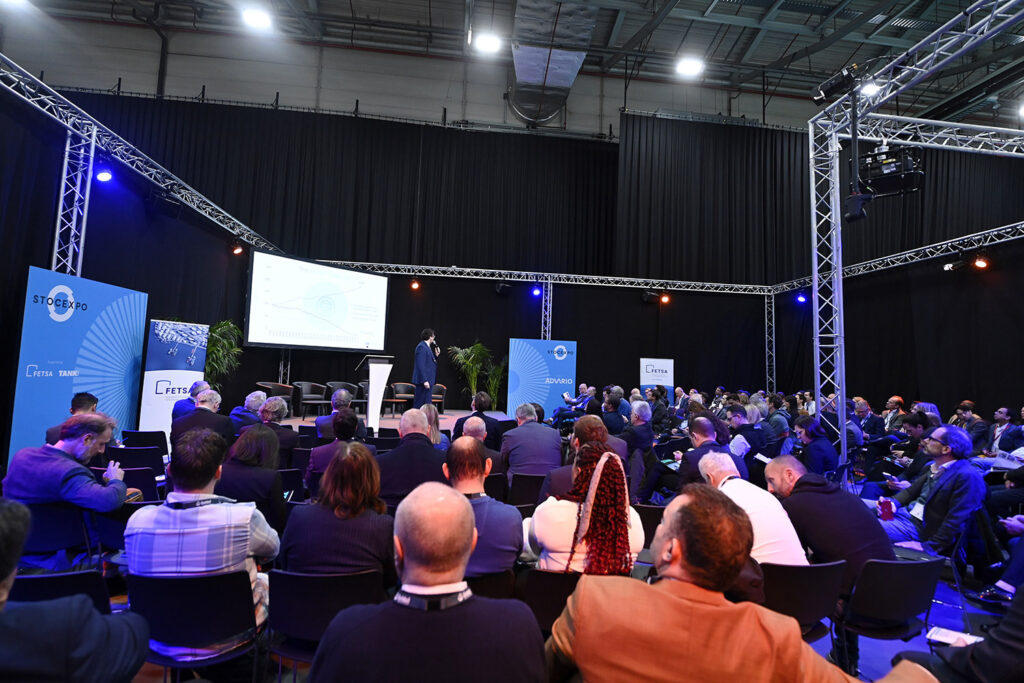 Heading up the conference was the European Commission’s Marek Sitta, who spoke at length about the energy trilemma. Where did it come from? Sitta mused that the crisis was created by a perfect storm of three factors: the Covid-19 pandemic, the invasion of Ukraine, and unplanned disruptions from droughts and corrosion, etc.
Heading up the conference was the European Commission’s Marek Sitta, who spoke at length about the energy trilemma. Where did it come from? Sitta mused that the crisis was created by a perfect storm of three factors: the Covid-19 pandemic, the invasion of Ukraine, and unplanned disruptions from droughts and corrosion, etc.
Sitta discussed the delicate balance between energy security, economics (and affordability) and environmental sustainability in the context of energy law and policy. For example, the EU’s risk preparedness regulation lays down rules for cooperation between Member States with a view to preventing, preparing for and managing electricity crises in a spirit of solidarity and transparency. Regulation (EU) 2017/1938 establishes provisions aiming to safeguard the security of gas supply in the European Union by ensuring the proper and continuous functioning of the internal market in natural gas, by allowing for exceptional measures to be implemented when the market can no longer deliver the gas supplies required.
But a key takeaway is that the 2021-2022 energy crisis was not related to the green transition. Instead, it is considered a (Russian) natural gas crisis translating into high electricity prices. Sitta explained the EU’s REPowerEU roadmap to reduce the dependence on Russian fossil fuels and fast forward the energy transition. This is based on three main pillars: energy saving & efficiency; massive acceleration of investment in renewables and; diversification of energy supplies.
In fact, the events of the past 18 months have dramatically revealed the many ways in which the energy transition and geopolitics are entangled. Energy security is crucial for the future and will be a critical pre-condition for the success of the EU energy transition. The concept of energy security is evolving, as a new risk/ threat landscape is emerging.
Evolving Trade Routes & Flows
Building on these points, Channoil Energy’s CEO Mark Waddington explained how, while oil demand is still growing, geopolitics and war in Ukraine has re-routed sour crude flows across the globe. Similarly, Russian gasoil has been diverted from Europe to pretty much anywhere – and this is evident from the appearance of Russian crude in products sold by countries in Asia. Plus, the Dangote refinery and increased US supply are drying up the export routes for European gasoline.
Waddington suggests that the doors are closing on European gasoline arbitrages, but there is another opportunity as European regulations set the pace on biofuels, HVO, SAF and feedstocks demand. Feedstock availability is expected to be critical to maintaining the pace of biofuels and renewable fuels growth, and the regulatory push from the EU is driving the race to source new feedstocks. So a combination of new feedstocks and new production pathways will be needed.

S&P Global’s Amit Rao comes to a similar conclusion when it comes to the EU shifting from fossil fuels to cleaner fuels. While 86.4% of Europe’s current bulk liquid storage is dedicated to oil and fuels, Rao predicts this share to drop, especially by 2050, as the industry focuses on cleaner fuels such as SAF, biofuels and hydrogen molecules. For example, many major European airlines have a target to use 10% SAF in their operations by 2030 –this will require additional (or re-purposed) storage capacity.
Rao also explored the relevance of carbon capture in the tank storage market. Across Europe, CO2 capture projects planned between 2024 and 2030 could potentially capture 144 million tonnes per year. Plus, the industry’s interest in nearly 13 Mt of green and low carbon ammonia could create an opportunity for more storage. It’s just a case of whether terminals are ready to seize the opportunity.
CCUS was also a topic discussed by Koole Terminals’ Tamme Mekkes, who highlighted three projects currently underway by the company: inland storage at Duisburg, Germany; a sea port terminal with storage in Rotterdam and; an import hub in Gismarvik, Norway. Mekkes explained that key challenges include demand, price and regulation, but also practical tank storage issues such as corrosion and tank pressure.
Safety In Tank Storage
The Terminal Operations & Safety Conference was curated to improve terminal best practices to elevate the industry. This year StocExpo drew in engineers, maintenance professionals, procurement, and project managers, covering diverse topics including safety, digitalisation, robotics, and more.
 Exemplifying safety excellence was Advario Asia Pacific’s Lai Siang Yeong, Regional Assets & Operations/ HSSE Manager, who shared the terminal’s safety framework to transform the Singapore cluster into best-in-class in safety performance. The three strategic themes cover: defending and strengthening operational excellence; transitioning people, culture and contractor management and; exploring and innovating data analytics. Lai Siang Yeong believes safety is a basic precondition to carry out Advario’s business, to make it an attractive workplace and make it grow sustainably, being a partner’s first choice.
Exemplifying safety excellence was Advario Asia Pacific’s Lai Siang Yeong, Regional Assets & Operations/ HSSE Manager, who shared the terminal’s safety framework to transform the Singapore cluster into best-in-class in safety performance. The three strategic themes cover: defending and strengthening operational excellence; transitioning people, culture and contractor management and; exploring and innovating data analytics. Lai Siang Yeong believes safety is a basic precondition to carry out Advario’s business, to make it an attractive workplace and make it grow sustainably, being a partner’s first choice.

While other presentations covered standard potential disasters, Gestur Guðjónsson from Olíudreifing looked at natural hazards and the risks these pose to storage tanks – something that may become more and more relevant as extreme weather conditions become more frequent.
For example, Olíudreifing designs tanks according to California standards to mitigate the risks of damage in an earthquake – which Iceland sees on a 7 on the Richter Scale. A highly volcanic country, Iceland also need to mitigate against ash clouds and lava flow – though the former is fairly low risk in comparison. Glacial and sea flooding present additional risks, which many other tank farms should consider – most of these are on coastal areas that present a risk of erosion. Are tank terminal operators
preparing for that risk?
Financing The Energy Transition
One key topic for the tank storage sector has been financing the energy transition and ensuring that terminal facilities can find appropriate lending. DNB Bank’s Berend Passman discussed trends in liquid storage financing, looking at acquisitions and re-financing across the sector. As well as interest rates and other financial issues, ESG considerations and Basel IV implementation are increasingly important considerations for lenders to the sector. Lenders’ interest will be supported by credible transition plans, sustainability linked loans (typically 3 ESG KPI’s) and environmental due diligence reports.
This was also touched on in David Tassadogh’s presentation on the value of ESG reporting. Speaking on behalf of GRESB, Tassadogh explained why reporting and benchmarking progress towards net zero is useful for terminal operators, looked at the major challenges and explored different frameworks, tools and initiatives to help reach goals. This included using the IIGCC’s investor expectations of corporate transition plans.
Operating Safely With Future Fuels
Once terminals can finance the transition, the question is how safe can it be to store and transport hydrogen? Dr Ion Agirre Arisketa from the SherLOHCk project delved into the strengths and weaknesses of LOHC technology to carry hydrogen. LOHCs are a safe, high density solution for hydrogen transport and (seasonal) storage of energy at ambient conditions. They are already compatible with liquid fuel infrastructures and could replace (compressed) gas transport for long and short distance distribution (e.g. pipelines, shipping, trucks).
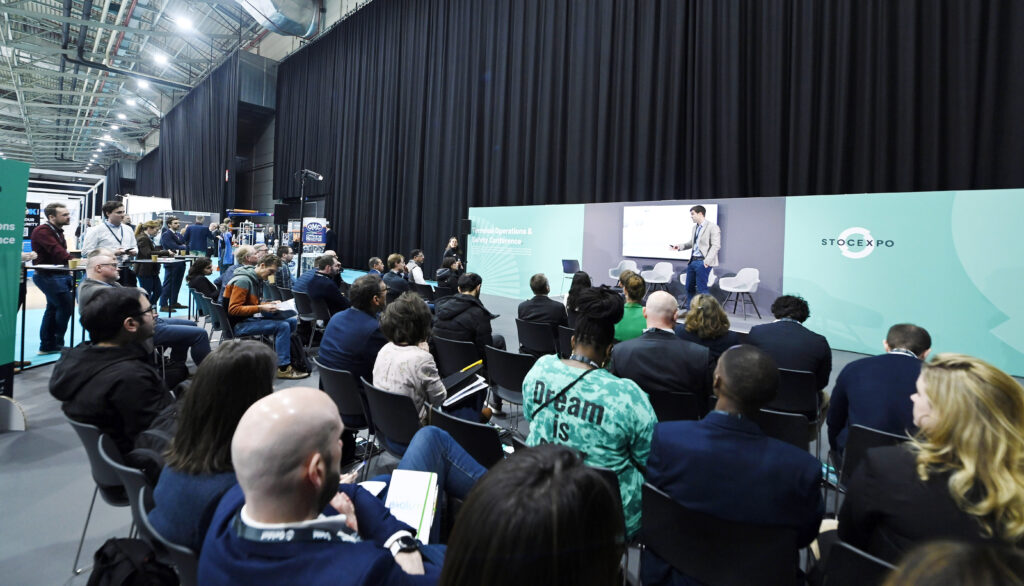
When it comes to the European market, this continent will be a net importer of hydrogen, which will need to be transported through pipelines and ships for long-distance trave. The overall cost of delivering hydrogen will vary according to the infrastructure available in the exporting/importing countries, transmission and distribution distances, the method of transport, and end-use demand.
Pure hydrogen storage and transportation is challenging due to low volumetric energy density. Each possible option has a variety of advantages and disadvantages, and the cheapest choice will vary according to geography, distance, scale and the required end use of the hydrogen. LOHC gains importance with increasing storage capacity and time requirements and is ideal for the initial target market of HRS hydrogen supply infrastructure (e.g. remote locations without grid connection).
Although hydrogen is considered to be one of the key elements in the global decarbonisation, its storage is more complicated than storage of many other energy sources that industry is much more used to. Walter Tosto’s Bora Aydin was able to shed more light on this. Since storing and transporting hydrogen under atmospheric conditions is highly inefficient, so it should be always put under high pressure. This brings molecules closer together, increasing the energy per volume and making hydrogen applicable for storage.
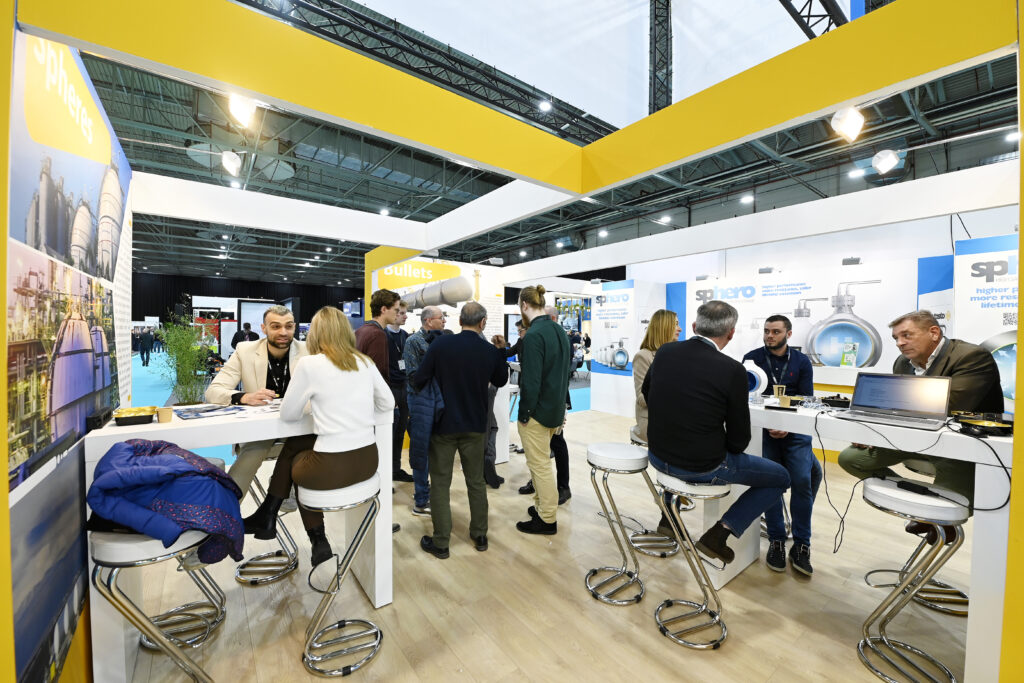
There are some standards for traditional storage (such as cylinders) available. However some segments such as welded pressure vessels require the development of new standards. Standards are required to include the issues related to safety aspects (material compability, qualification of metallic materials, leakage etc.) for high- and very-high pressure tanks for long-term and high-capacity hydrogen storage which require the necessity of using the metallic materials with the welded components. One of the major critical issues in the storage of gaseous hydrogen is the potential embrittlement effect that reduces the ductility of a metal due to absorbed hydrogen. The cracks will be initiated and propagated due to decrease in stress. However, Walter Tosto’s Sphero purports to be the solution; an innovative spherical tank for high-pressure hydrogen gas storage.
In addition to the shape, the materials and safety systems offer Sphero high performance, resistance and safety. A continuous monitoring system addresses the problem of unexpected structural ruptures. However, the primary objective achieved by Walter Tosto’s R&D department is to ensure the storage time according to the desired life cycles, further optimising the efficiency and reliability of Sphero as a response to industry demands. This helps make the processes of large industrial plants and hard-to-abate sectors protected, sustainable and ready for profitable use in a circular economy.
Revisions To PGS-12 For Ammonia Storage Tanks
Another key safety element, Vopak’s Martin Reuvers’ delivered an in-depth presentation on the revisions to PGS- 12 for ammonia storage, highlighting changes that are critical for the tank sector to know. The previous PGS- 12:2014 did not cover all risks related to large scale storage in a storage terminal environment. With 10-15 ammonia initiatives in the Rijnmond area and the Province of Zeeland, an urgent request emerged to revise the PGS-12.
The aim is to design and build a tank that, once commissioned and operational, does not need intrusive inspection (out of service) for the next 30 years – similar to a LNG or LPG tank. In the Netherlands, the conclusion is to build full containment tanks with a protective concrete ‘blast- wall’ to protect the tank against exterior impact. This is because ammonia tanks will be built in densely populated areas and the Netherlands has clearly defined failure rates for single and double wall tanks; this clearly states a failure rate for a steel/steel tank (not protected against impact from external projectiles) of 10-6 versus a concrete/steel tank of 10-8.
With this input, the QRA will not meet the requirements with a steel/steel tank in the Netherlands. It is important to consider that PGS-12 is specific to the Netherlands, and is not applied globally – though it may become a benchmark for other countries.
Women in Tanks
Moderated by Tank Storage Magazine’s editor Anamika Talwaria, StocExpo’s Women in Tanks panel discussion platformed female engineers and operators involved in the tank storage sector. The panellists included Advario’s Kelly Regalado, Sandra de Bont from VOTOB Academy, Sandra De Mey from North Sea Port and Vopak’s Kathy Stewart.
 While all the panellists had stories to share of gender discrimination across their careers, the most uplifting moments were the shows of support from both female and male colleagues across the sector.
While all the panellists had stories to share of gender discrimination across their careers, the most uplifting moments were the shows of support from both female and male colleagues across the sector.
One interesting tangent followed the clothes that men and women wear – and whether women should be more muted to appear professional, or whether men need to be given the space and freedom
to wear loud, bright clothing. A move away from the technical discussions of earlier, but a welcome change as everyone had something to contribute – including men in the audience.
Save The Date
Packing in so much content and networking over just two days, next year will follow the same blueprint, taking place on 11 & 12 March at the Rotterdam Ahoy, Netherlands. With the StocExpo 40 Under 40, another exclusive terminal tour and plenty of opportunity for networking (including the Global Tank Storage Awards), don’t miss out on the 2025 event. Plan early to ensure you can make it as it’s not one you’ll want to miss.
For more information:
StocExpo 2025 will take place on 11 & 12 March 2025 at the Rotterdam Ahoy. Register your interest now
The conference will once again be put together with input from you, the readers of Tank Storage Magazine so if you have a burning issue that you want to address with the industry, get in touch with anamika@tankstoragemag.com
Missed this year’s conference? Become a Tank Storage Elite Member for full access to both conference stages on demand.
As well as interest rates and other financial issues, ESG considerations and Basel IV implementation are increasingly important considerations for lenders
to the sector. Lenders’ interest will be supported by credible transition plans, sustainability linked loans (typically
3 ESG KPI’s) and environmental due diligence reports.
This was also touched on in David Tassadogh’s presentation on the value of ESG reporting. Speaking on
behalf of GRESB, Tassadogh explained why reporting and benchmarking progress towards net zero is useful
for terminal operators, looked at the major challenges and explored different frameworks, tools and initiatives to help reach goals. This included using the IIGCC’s investor expectations of corporate transition plans.
Operating Safely With Future Fuels
Once terminals can finance the transition, the question is how safe can it be to store and transport hydrogen? Dr Ion Agirre Arisketa from the SherLOHCk project delved into the strengths and weaknesses of LOHC technology to carry hydrogen.
LOHCs are a safe, high density solution for hydrogen transport and (seasonal) storage of energy at ambient conditions. They are already compatible with liquid fuel infrastructures and could replace (compressed) gas transport for long and short distance distribution (e.g. pipelines, shipping, trucks).
When it comes to the European market, this continent will be a net importer
of hydrogen, which will need to be transported through pipelines and ships for long-distance trave. The overall
cost of delivering hydrogen will vary according to the infrastructure available in the exporting/importing countries, transmission and distribution distances, the method of transport, and end-use demand.
Pure hydrogen storage and transportation is challenging due to low volumetric energy density. Each possible option has a variety of advantages
and disadvantages, and the cheapest choice will vary according to geography, distance, scale and the required end use of the hydrogen. LOHC gains importance with increasing storage capacity and time requirements and is ideal for the initial target market of HRS hydrogen supply infrastructure (e.g. remote locations without grid connection).
Although hydrogen is considered to be one of the key elements in the global decarbonisation, its storage is more complicated than storage of many other energy sources that industry
is much more used to. Walter Tosto’s Bora Aydin was able to shed more light on this. Since storing and transporting hydrogen under atmospheric conditions is highly inefficient, so it should be always put under high pressure. This brings molecules closer together, increasing the energy per volume and making hydrogen applicable for storage.
There are some standards for traditional storage (such as cylinders) available.
However some segments such as welded pressure vessels require the development of new standards. Standards are
required to include the issues related to safety aspects (material compability, qualification of metallic materials, leakage etc.) for high- and very-high pressure tanks for long-term and high-capacity hydrogen storage which require the necessity of using the metallic materials with the welded components.
One of the major critical issues in the storage of gaseous hydrogen is the potential embrittlement effect that reduces the ductility of a metal due to absorbed hydrogen. The cracks will be initiated and propagated due to decrease in stress. However, Walter Tosto’s Sphero purports to be the
solution; an innovative spherical tank for high-pressure hydrogen gas storage.


